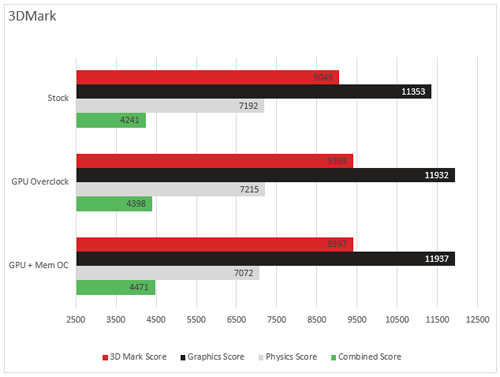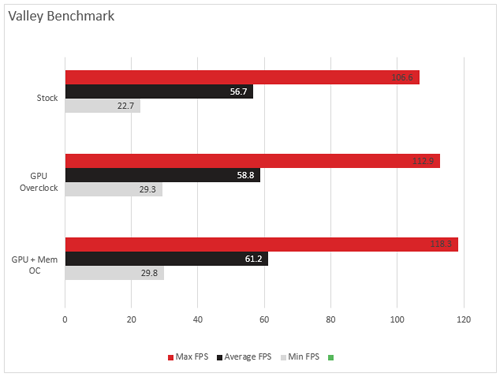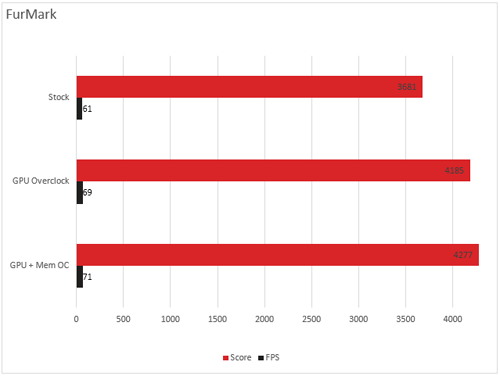Synthetic Benchmarks
While they don’t actually give any kind of insight into real-world gameplay experience, synthetic benchmarks offer the ability to compare the exact same series of events over a number of repeated runs. No matter how much you try, you’ll never get the same kind of comparison with actual gameplay. There are just too many variables involved. For those reasons we also include a number of these tests for comparison.
3DMark
The top dog in this space is 3DMark, which most of you are likely familiar with. There are a number of different test to run, but for our purposes we’ll be running FireStrike which is designed for 1080p gaming.

For this test overclocking the GPU had a positive effect, but the memory really didn’t help.
Unigine Valley
Unigine has been putting out quality graphics benchmark test for a number of years now. Their most recent being the Valley Benchmark. This test runs through a number of different scenarios, taxing different aspects of the graphics cards capabilities. We ran the test using the Extreme HD preset which sets everything on high, and the resolution at 1080p.

Valleys score was definitely affected by the overclock of both the GPU and Memory. Each metric was increased for both overclock settings.
FurMark
FurMark is a much less known benchmark test. Its primary task is rendering fur on a ball. While not very exciting to look at, the test can tax your system beyond most other tests. We use it mostly for stability testing. If an overclock can pass this test, it’s almost a guarantee there won’t be any trouble in other tests.

FurMark reacted well to the GPU overclock. The memory added a little bit more a boost, but not a very large amount.


